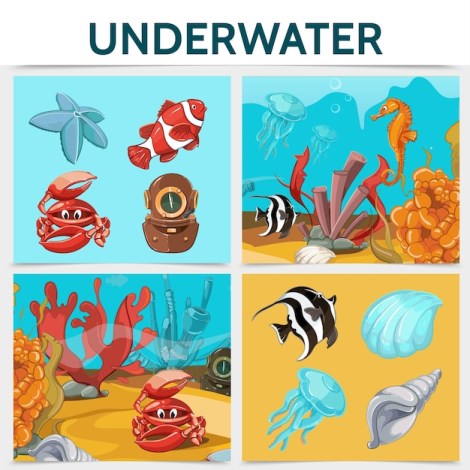Jellyfish Fun Facts

Jellyfish have been on Earth for over 500 million years, making them one of the oldest living creatures.
Some jellyfish are bioluminescent, meaning they can emit light.
Jellyfish have no brains, yet they are capable of sophisticated behaviors.
Most species of jellyfish are found in the ocean, but some can also survive in freshwater.
The largest species of jellyfish can have a bell diameter of over six feet.
Jellyfish have soft bodies composed mainly of water, which is why they require water to survive.
There are more than 2,000 known species of jellyfish.
Jellyfish have a unique reproductive cycle that involves both asexual and sexual reproduction.
Jellyfish sting their prey with specialized cells called nematocysts, which inject venom.
Jellyfish can have a wide range of colors, including pink, blue, and even transparent.
Some jellyfish have a lifespan of only a few hours, while others can live for several years.
The jellyfish’s umbrella-like bell allows it to move through the water by contracting and expanding.
Jellyfish are excellent swimmers and can reach speeds of up to five miles per hour.
Certain species of jellyfish are kept in aquariums around the world for educational purposes.
Contrary to popular belief, not all jellyfish are harmful to humans. Some species have mild or no stinging capabilities.
Jellyfish play an important role in marine ecosystems as prey for larger animals.
Jellyfish Fun Facts part 2
Jellyfish can reproduce rapidly and form large blooms, which can have both positive and negative impacts on marine ecosystems.
Moon jellyfish are one of the most common species found in coastal areas.
Some jellyfish have symbiotic relationships with other organisms, such as the fish that live among the tentacles of the jellyfish for protection.
Jellyfish have been used in Chinese medicine for centuries.
Certain species of jellyfish can regenerate damaged body parts.
Jellyfish have a unique feeding process, where they capture prey with their tentacles and then bring it to their mouth located in the center of their bell.
The tentacles of some jellyfish can stretch several times their body length.
Jellyfish are susceptible to pollution and climate change, making them important indicators of environmental health.
Box jellyfish have highly venomous tentacles and are responsible for several human deaths each year.
Some jellyfish have an ability to age in reverse and revert back to their juvenile form under certain conditions.
Jellyfish are more than 95% water, giving them a delicate and fragile appearance.
Several species of jellyfish have been named after popular figures, such as the Darth Vader jellyfish and the fried egg jellyfish.
The life cycle of a jellyfish can vary greatly depending on species and environmental conditions.
Jellyfish have an unusual sense of direction and can detect the Earth’s magnetic field.
Jellyfish adapt to changes in their environment by altering their body size and shape.
Certain species of jellyfish have been found to exhibit social behaviors, such as congregating in groups.
Jellyfish are often used in scientific research to study regeneration and neurobiology.
The Portuguese man o’ war is not a true jellyfish but a colony of specialized organisms working together.
Some species of jellyfish are cannibalistic, meaning they will eat other jellyfish.
Jellyfish have been known to travel long distances by drifting with ocean currents.
Jellyfish have been used as inspiration for various technological advancements, such as underwater robots.
The size of a jellyfish can vary greatly, ranging from as small as a fingernail to as large as a refrigerator.
Jellyfish can adapt to a wide range of water temperatures, from frigid Arctic waters to warm tropical seas.
Jellyfish are more abundant in certain areas due to human activities, such as overfishing and pollution.
Japanese cuisine includes various dishes made with jellyfish, such as salted jellyfish salad.
Some jellyfish have specialized structures called statocysts, which allow them to maintain balance and orientation in the water.
Jellyfish blooms can cause damage to fishing nets, resulting in economic losses for fishermen.
Some jellyfish can pulsate their bells in a way that propels them forward without the need for constant swimming.
The beauty of jellyfish in motion has inspired artists, photographers, and poets throughout history.

